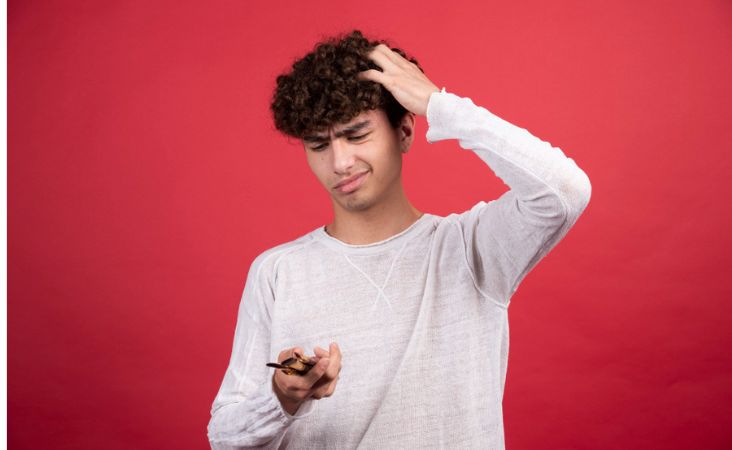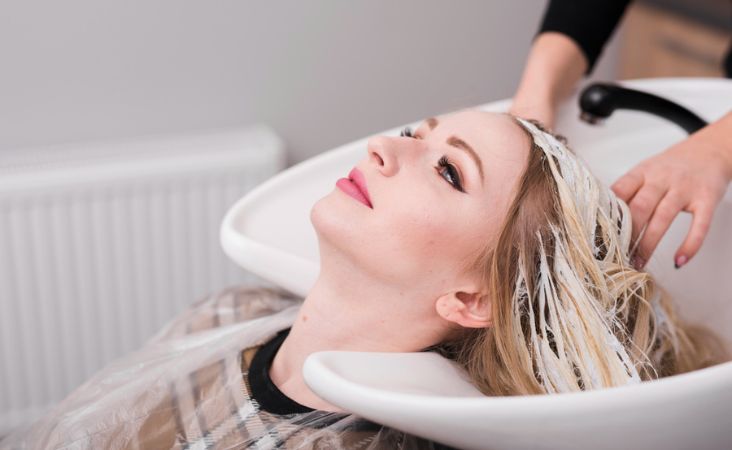Ingrown Hair on the Scalp: Causes, Symptoms, Treatments, and More
- Written by Victor Lordhair
- Sep 12, 2023
- |
- 10 min read
 Listen to the full text
Listen to the full text
Shaving scalp hair often feels like a necessity to some men (hair system wearers especially). What’s frustrating is potentially dealing with the aftermath of pesky ingrown strands of hair. Although they might be a minor annoyance to some, they can significantly impact the lives of men who experience them very frequently.
Surprisingly, many men and women are still unaware of this condition that impacts scalp health in a major way if left unchecked. If you’re one of them, keep reading!
In this blog, Lordhair - trusted globally for hair toupees - will talk on the subject of ingrown hair on the scalp. From its underlying causes to symptoms and effective treatments to recommendations, we will cover all crucial aspects. We bet that by the end, you’ll be equipped with the knowledge you need to tackle ingrown hair head-on (pun intended).
Shall we begin?
What Is Ingrown Hair?
Ingrown hair is a dermatological condition where a hair follicle, instead of growing outward from the skin's surface, becomes trapped beneath the skin. It typically occurs when the hair shaft curves back into the follicle or when dead skin cells obstruct its path.
Although this dermatological hair condition can affect any part of the body, it mostly impacts the scalp of men who shave their heads from time to time. Some women also experience this condition when they choose to wax to get rid of unwanted hair.

What Are the Causes Behind Ingrown Hair?
A plethora of reasons contribute to the development of ingrown hair in both men and women. Here are some of the key contributing factors:
Hair follicle curvature
One primary cause of ingrown hair on the scalp lies in the natural curvature of hair follicles. Dermatologists state that when hair grows at an angle or curls back into the skin, it can become trapped beneath the surface. Also called pseudofolliculitis barbae, this often occurs in people with naturally curly or coarse hair types.
Improper shaving techniques
Yes, you read it right! Using incorrect shaving techniques can also lead to ingrown hair. Shaving too closely or against the grain can damage the hair below the skin’s surface. Put simply, it can cause hair to grow back into a follicle. Dull blades can also contribute to this problem as they may tug or pull at scalp strands rather than cutting them cleanly.
Accumulation of dead skin cells
A build-up of dead skin cells can also obstruct the path of the hair as it grows, forcing it to curl back into the scalp skin. This problem can be triggered if your scalp is not exfoliated regularly, creating an environment conducive to ingrown hair formation.
Tight hairstyles and headgear
Another known cause of ingrown hair on the scalp! Wearing tight hairstyles or headgear (hats and helmets, for example) can create friction and pressure on our heads. This can lead to hair being pushed back into the follicles, increasing the likelihood of ingrown hair development.
Scalp skin irritation and inflammation
Skin conditions such as acne and folliculitis that usually cause inflammation and blockages in the hair follicles can also trigger ingrown hair on the scalp. According to dermatologists, when hair attempts to grow through inflamed follicles, it can become trapped, leading to ingrown hair issues.
- Everything you need to know about scalp psoriasis hair loss
- Hydrate your hair for optimal scalp health
- Ultimate guide to getting rid of scalp build-up
What Are the Symptoms of Ingrown Hair on the Scalp?
Ingrown hair can manifest various uncomfortable and noticeable symptoms including:
-
Redness and swelling: The affected area often becomes red and swollen as the trapped hair irritates the surrounding skin.
-
Itching and discomfort: Ingrown strands can be itchy and cause discomfort, making them bothersome.
-
Painful bumps or pustules: In some cases, ingrown hair can lead to the formation of painful, raised bumps or pustules resembling small pimples.
-
Dark spots or hyperpigmentation: Over time, recurring ingrown hairs can cause dark spots or hyperpigmentation at the site of the trapped hair.
-
Infection: If bacteria enter the irritated follicle, it can result in infection. According to dermatologists, it can be characterized by increased redness, pus, and worsening pain.
What Are Treatments for Ingrown Hair on the Scalp?
While ingrown hair can be bothersome and sometimes painful, it is typically not a cause of major concern. It’s a common issue that many individuals who shave their heads in order to wear a hairpiece may encounter at some point in their lives. Fortunately, there are several treatments available to alleviate the discomfort and resolve the problem.
Here are some treatments for fixing ingrown hair on the head:
Gentle exfoliation
Here's a super effective way to treat this hair condition! Gentle exfoliation, while using a mild exfoliating scrub or soft-bristle brush, will help you remove dead skin cells that may be obstructing hair growth. Just make sure not to scrub too vigorously. Regular exfoliation will aid in promoting healthier scalp conditions and prevent future ingrown strands. This is very important for men in love with toupee hair replacement systems or indeed women who wear wigs to cover their baldness

Warm compress
Applying a warm, moist compress to the affected area on the scalp will help men and women open their hair follicles and reduce inflammation. This can make it easier for ingrown hair to naturally emerge from the skin. Gentle, consistent use of warm compresses will also soothe discomfort and prevent scalp infection.
Topical antibiotics
If ingrown strands have become infected, topical antibiotics can be applied to prevent or treat the infection. There are many medications (antibiotic cream, for instance) available on the market that can help deal with this condition. Timely application of antibiotics can halt the progression of infections and promote healing.
However, don’t forget to take a prescription from your dermatologist since some topical antibiotics have their share of side effects too.
Tweezing or sterile needle extraction
Another known method to overcome ingrown hair on the scalp. By carefully using sterilized tweezers or needles, one can free the trapped hair. Just make sure that tools are sanitized as this can help you prevent further scalp infections. Gently lift the hair out without digging into the skin. In case you can’t do it yourself, you can ask your healthcare provider to do it with precision and caution to avoid further skin damage.
Salicylic acid products
Salicylic acid-based products such as medicated creams and pads can be effective in exfoliating the skin and reducing inflammation. Regular use of these can keep the scalp clear of debris and reduce the risk of future ingrown hair strands.
Ingrown Hair on Scalp: Final Words
There you go! We've told you everything you need to know about ingrown hair on the scalp. Remember, while ingrown strands can be a nuisance, they are usually not a health concern. With the right knowledge and treatments at your disposal, you can effectively manage and even prevent them from occurring in the first place.
Now that you’re armed with this knowledge, you can confidently face the challenge of ingrown hair on your scalp whether or not you're a hair system wearer. Contact us today in case you have any hair system queries. Our hair experts will be more than happy to answer them for you!


